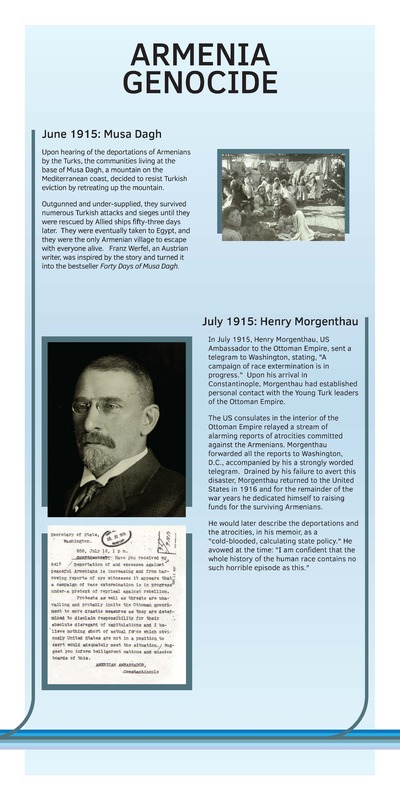Armenian Genocide 1
June 1915: Musa Dagh
Upon hearing of the deportations of Armenians by the Turks, the communities living at the base of Musa Dagh, a mountain on the Mediterranean coast, decided to resist Turkish eviction by retreating up the mountain.
Outgunned and under-supplied, they survived numerous Turkish attacks and sieges until they were rescued by Allied ships fifty-three days later. They were eventually taken to Egypt, and they were the only Armenian village to escape with everyone alive. Franz Werfel, an Austrian writer, was inspired by the story and turned it into the bestseller Forty Days of Musa Dagh.
July 1915: Henry Morgenthau
In July 1915, Henry Morgenthau, US Ambassador to the Ottoman Empire, sent a telegram to Washington, stating, "A campaign of race extermination is in progress." Upon his arrival in Constantinople, Morgenthau had established personal contact with the Young Turk leaders of the Ottoman Empire.
The US consulates in the interior of the Ottoman Empire relayed a stream of alarming reports of atrocities committed against the Armenians. Morgenthau forwarded all the reports to Washington, D.C., accompanied by his a strongly worded telegram. Drained by his failure to avert this disaster, Morgenthau returned to the United States in 1916 and for the remainder of the war years he dedicated himself to raising funds for the surviving Armenians.
He would later describe the deportations and the atrocities, in his memoir, as a "cold-blooded, calculating state policy." He avowed at the time: "I am confident that the whole history of the human race contains no such horrible episode as this."
